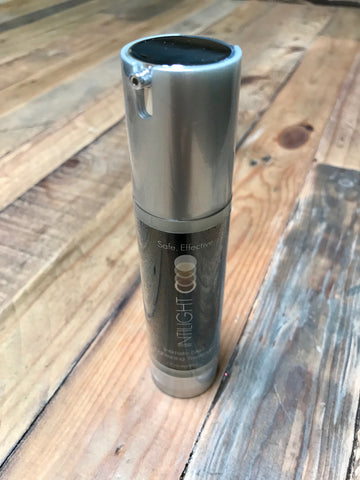Hydroquinone is an ingredient that is found in a lot of skin whitening products, including Intilight (2%). While it was widely used in the past years, it has been discredited due to possible health risks. In order to make up your mind about the right skin bleaching cream for you, it is important to find out more about this ingredient.
Hydroquinone inhibits tyrosinase, an enzyme that is vital for melanin or pigment development. For as long as you are using a cream that has hydroquinone in it, you will essentially be blocking this process. Unfortunately, once you discontinue the product, this will be restored again and in time, your skin’s normal tone will partially return.

This is why dermatologists recommend the use of hydroquinone products in cycles lasting 4 months. You can, however, alternate with other ingredients that also block tyrosinase but are milder than hydroquinone, like kojic acid or arbutin.
Using hydroquinone with a product that has hydrogen peroxide or benzoyl peroxide might lead to some staining of your skin. While this might be removed with some water and soap, it is just best to prevent these products while using your hydroquinone-based skin bleaching cream INTILIGHT.
Another ingredient to avoid while using hydroquinone is resorcinol. This is because combining the two has been proven to lead to ochronosis in persons with darker skin tone. Resorcinol is a common ingredient in other bleaching products, so it is important to read the labels before buying. Even if you have a lighter complexion, it is better to just avoid taking the risk. Otherwise, you might end up with an outcome completely opposite to what you are trying to achieve.
Though it is not as well-known, the biggest risk that hydroquinone poses on your health is eye pigmentation and permanent damage on your corneas. In order for this to happen, your eyes have to be directly exposed to this ingredient, but you would not want to take that risk. Make sure to avoid the areas around your eyes when using hydroquinone-based creams.
Research with mice has suggested that the use of hydroquinone products IN HIGH AMOUNTS increases the risk of liver tumors. However, dermatological experts have corrected this, stating that hydroquinone might actually reduce the proportion of liver tumors that ended up malignant although it does increase the amount of benign liver tumors.
Some of the most effective skin brightening creams out there contain 2-4% hydroquinone. Unfortunately, because of the backlash against this ingredient, many have tried to steer clear of it completely. This is not necessary. By following the guidelines for safe use of hydroquinone (2%), you will get the results you are looking for with continued use over a period of time when used consistently.